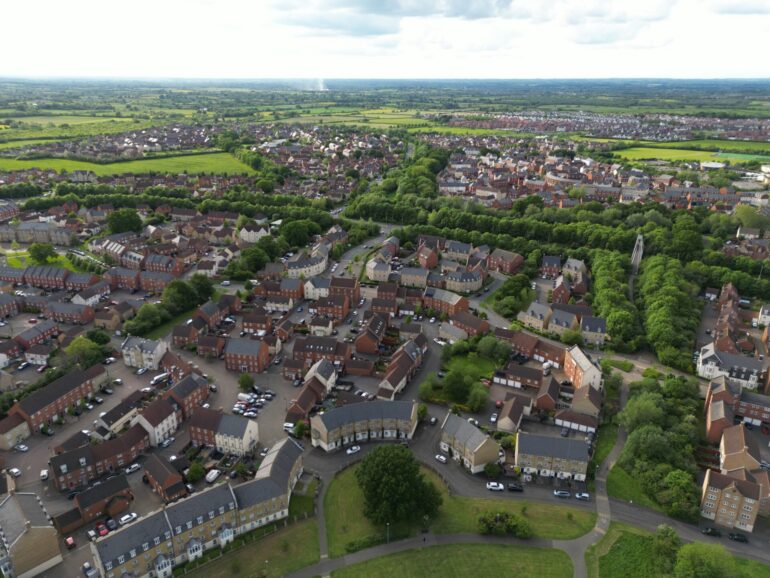The average house price reached £266,400 in July, the latest data from Zoopla’s House Price Index has revealed.
According the the index, the average house price has risen by 1.4% so far since the beginning of the year and is on track to be 2.5% higher over 2024.
Over the last decade, house price falls have only occurred during Q4 2022, Q3 2022, and Q4 2022. These falls were all in response to higher mortgage rates.
This year has seen a return to low rates of house price inflation, albeit slowing in the last three months.
Indeed, this improvement in house prices over the year-to-date has been felt across most areas of the country.
Price inflation turned positive in London (+0.2%), while prices saw small falls in the South East (of England), South West (of England) and East Midlands.
There remained pockets of the country where house prices saw small falls on both a quarterly and annual basis.
This includes Taunton (-2.0%), Dartford (-1.3%), Enfield (-1.1%) and Harrogate (-1%).
However, house prices were experiencing above-average annual gains in more affordable housing markets, which are often in proximity to larger cities.
This includes Wolverhampton (3%), Oldham (2.8%) and Wakefield (2.7%).
Across the Scottish borders, house prices were rising even faster, from Dumfries and Galloway (4.4%) to Galashiels (3.1%), as well as in the Falkirk postal area (3.1%).
Sarah Coles, head of personal finance at Hargreaves Lansdown, said: “Sellers can’t afford to get carried away.
“Buyers are back, with demand up a fifth in a year, but sellers who get cocky, and price their home too optimistically, will pay a horrible price for their over-confidence.
“Sellers who end up having to cut their asking price by 5% or more take more than twice as long to sell – which for new sellers would mean squandering the back-to-school September market.
“There’s plenty to cheer in this data, with house prices up 1.4% since the beginning of the year, buyer demand booming and more sales being agreed.
“The Bank of England interest rate cut has boosted sentiment significantly, and helped persuade buyers that now is a decent time to get stuck in. It didn’t have a dramatic overnight impact on average mortgage rates, but they’ve continued drifting southwards, and the fact they’ve been falling for a couple of months is starting to really add up.
“Moneyfacts figures show that the average rate on a 2-year fixed-rate deal has dropped from 5.97% at the end of June to 5.58% now.”
She continued: “However, there’s a real risk in getting carried away and over-pricing your home. There’s so much on the market that buyers can take their pick, and at the same time, the fact prices are so high and mortgages remain relatively expensive means they face a real stretch to buy pricier homes.
“Anything that’s too expensive will be kicked to the kerb. It won’t just mean you end up having to cut the price. Because you’ve lost the initial interest in your home, you may end up having to cut it more than if you’d been realistic at the outset.
“You could also end up taking more than twice as long to sell, and if you miss the autumn enthusiasm, face trying to sell in the depths of winter.”
Coles concluded: “It means sellers need to do their homework, and price carefully. It’s also worth doing everything you can to prepare your home, your paperwork and your finances, so you can move quickly when you get the chance.
“If you’re buying at the same time, you also need to think about preparing your mortgage and the cash you need for moving costs.
“These need to be in an easy access savings account or cash ISA, so you can get your hands on them whenever you need it.
“And while the rates on these deals have been falling, you can still make more than 5% in the most competitive accounts if you look beyond the high street giants to online banks and savings platforms.”



